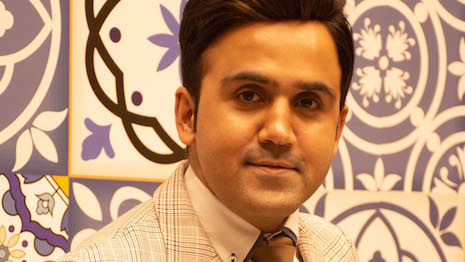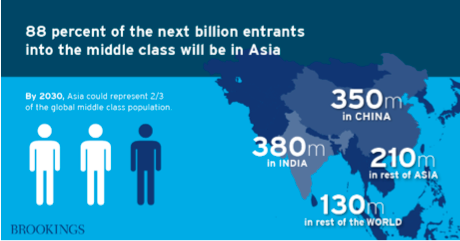- About
- Subscribe Now
- New York,
March 11, 2019

 Harsh Mann is founder/director of HM Luxury Consultancy
Harsh Mann is founder/director of HM Luxury Consultancy
By Harsh Mann
According to the National Council of Applied Economic Research, India’s middle class population was 267 million-plus in 2016 and is likely to more than double by 2026.
Another piece of research from The Brookings Institution claims that Asia could represent two-thirds of the middle-class population worldwide, with close to 380 million in India alone by 2030. Compared to the Western economies, China and India have been growing with an annual growth rate of more than 6 percent, resulting in a huge market potential for these emerging economies.
Here are 10 trends to understand Indian middle class consumers’ attitude towards luxury products:
1. Affordable luxury
The middle class in India has always preferred affordable luxury because of the compulsive behaviour of comparing various products based on cost and quality.
A luxury brand targeting the Indian middle-class segment should always keep in mind that there should be variety of entry-level products.
According to Euromonitor International, the affordable luxury segment is rapidly growing at more than 40 per year. Considering brand-conscious Indian clientele, labels such as Kate Spade, Michael Kors, Coach and Charles & Keith have been able to offer affordable premium products to cater to the emerging customer base with increasing disposable income who aspire the luxury lifestyle.
Affordable luxury primarily works in hospitality in India.
2. Innovation
The majority of the Indian middle class wants to be the center of attraction and is ready to spend any amount of money on innovative products. Innovation primarily works in luxury gadgets and automotive.
3. Which types of luxury products or services do they typically buy?
After studying and surveying hundreds of middle class families across India, frequently-bought luxury products and services ranked sector-wise are as below:
4. Show-off culture
While studying the purchase trends in luxury across India, North Indian states such as Delhi, Punjab, Haryana, Uttar Pradesh and Rajasthan boasted a strong show-off culture. The need to buy a luxury car is usually fuelled by the need for conspicuous consumption among buyers in this demographic area of the market and the desire to appear more superior and powerful in society.
The Northern Indian states have the most number of luxury consumers with more than 40 percent market share, followed by South India at 25 percent.
5. Education about product details
Seventy percent of people from the Indian middle class do not have technical knowledge of luxury products, per information gathered by me after interviewing numerous sales executives from premium brands.
During these interviews, one of the sales executives from a premium leather fashion brand said many Indian customers cannot differentiate between calf and goat leather and are completely confused with the detailing.
 Almost nine out of 10 of the next billion entrants into the middle class worldwide will be in Asia. Source: The Brookings Institution
Almost nine out of 10 of the next billion entrants into the middle class worldwide will be in Asia. Source: The Brookings Institution
6. Scarcity
It is imperative that the quality, uniqueness and rarity of the product is rightly put across to the customer which, in turn, will increase demand and importance.
Scarcity works for every consumer class and hence is an important constituent in the market that favors the brands.
7. Influence of Bollywood trends
The Indian middle class is extremely influenced by Bollywood. The majority of the middle class spend their weekends watching cinema, which plays a huge role in their lives as a trendsetter because people want to adopt the lifestyle played by their favorite on-screen actors.
This adulation automatically generates demand of luxury products and services shown in the movies and Punjabi music videos used by their favorite stars.
Another related platform that people follow to search for new trends in luxury are the movie award shows. This is where every movie star will walk in designer clothing and driven in a luxury car to such events.
8. Power of logo on a product
India ranks number one when it comes to buying products with luxury logos. Wearing a luxury brand with a logo boosts the image of the person silently and illustrates his or her status in the society.
9. Made in Europe
In the Indian middle class market, luxury buyers are ready to buy products which are made in Europe over Indian-manufactured goods. This is because of their belief that the quality of European goods is far better than Indian goods and they are ready to pay a price on a higher side for the quality.
10. Special treatment = Brand promotion
The Indian middle class has a strong way of promotion – word of mouth. If a customer leaves the showroom happily, he or she will the word in the respective social circles.
What will make this word of mouth more likely? Either paying special attention, offering a gift or a greeting card. These small gestures make a big difference when it comes to the Indian middle class.
Harsh Mann is founder/director of HM Luxury Consultancy, Gurgaon, Haryana, India.
Share your thoughts. Click here